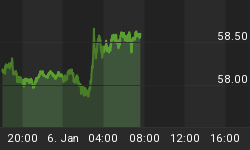Looks like the past year's borrowing and printing are finally paying off. Junk bonds are setting records and emerging stock markets are booming. See this overview and this look at today's action.
But even in this kind of hot money environment, the collapse in spreads between emerging market bonds and U.S. Treasuries is remarkable:
Emerging market bond sales hit record high
Emerging market bonds have had their best start to the year on record as new issuance has surged and interest rate premiums over US Treasuries have narrowed to their lowest since 2008.
Sovereign bond markets in developing countries have seen a record $129bn in new deals so far this year, a 42 per cent increase over the same period last year, the previous record for issuance, according to Dealogic.
Bond yields, which have been tightening since March last year, have narrowed further in the past two weeks as the success of Greece's new debt offering at the start of the month stabilised markets.
Emerging market yields narrowed to 2.57 percentage points over US Treasuries on Monday compared with 3.5 percentage points a month ago, according to JPMorgan's Embi+ index. That is a sharp fall from the recent cyclical peak of 6.84 percentage points in March last year and just a fraction of the all-time peak of 16.64 percentage points over US Treasuries in September 1998. The index, which tracks the 16 biggest emerging bond markets, was launched at the end of 1997 after the Asian financial crisis.
Bryan Pascoe, global head of debt syndication at HSBC, said that optimism surrounding Greece had boosted emerging market bonds, allowing governments to lock in low borrowing rates. However, other bankers warn that a sell-off may be imminent as interest rate spreads over benchmark bonds have tightened too far, particularly in markets such as Indonesia and Brazil, which have been among the best performers.Nigel Rendell, senior emerging markets strategist at RBC Capital Markets, said: "It is a good time for investors to take some profits and wait for a better time to buy as the market is almost certain to fall in the next few months."
Brett Diment, head of emerging market debt at Aberdeen Asset Managers, added: "There is very low default risk among the emerging markets and that is why yields have fallen so low, but some markets do look very expensive." Indonesian five-year bond yields, for instance, have fallen to 3.77 per cent, down from 9.49 per cent when the debt was issued in February last year. That means the country is paying 1.38 percentage points over US Treasuries versus 7.58 percentage points in February 2009. Other strong performing government bond markets have included Brazil, Poland, Hungary and South Korea, which have all seen a sharp narrowing in their yields over Treasuries.
There are two ways to view narrowing spreads on emerging market bonds. First, some developing countries are getting their acts together, running trade surpluses and thus becoming better credits with lower default risk. In other words they deserve it. But the second possibility is that money is flowing into these bonds as an escape from U.S. Treasuries. If you're managing a global fixed income portfolio and watching U.S. debt building up even as the Fed keeps rates artificially low by buying up long-dated Treasuries, you quite rationally want to be anywhere but there. So you shift to other countries' bonds, pushing their yields down. But it's not because you suddenly think Indonesia should only have to pay 3.77 percent on five-year paper. It's that you have money to invest and want to be as far away from U.S. Treasuries as possible.
The unusual nature of this collapse in spreads might lead to some equally unusual results. A few possibilities:
1) U.S. rates spike as the markets finally catch on to the games being played here, causing emerging market spreads to narrow even further and maybe even go negative. That is, the U.S. might end up having to pay more to borrow than Brazil. Sounds crazy right now, but remember the supply side of the equation: the US is dumping record amounts of paper into the market while the supply from many developed countries is fairly restrained.
2) All this borrowing and money printing causes inflation (primarily in the form of resource prices) to accelerate, which makes any bond yielding 3 or 4 percent look horrendous and causes interest rates to rise everywhere in response. The effect is more serious for resource consumers like the U.S., Japan, and Europe than for producers like Brazil and Canada, so spreads between consumer and producer nations might continue to narrow while rates generally go up.
3) A financial/political crisis, of which there are plenty waiting in the wings, could trigger one last dollar-centric flight to safety, sending spreads back out to historic levels and smacking emerging market bond investors hard. It would be temporary, since the Fed will respond to the crisis by printing more money, but it will still send the hot money scurrying away from junk and emerging markets.
All roads, in other words, lead to trouble of some sort, which makes year-ahead asset allocation pretty easy: You just short everything in sight. Consider TBT for long-term Treasuries, EDZ for emerging market stocks. You can go long volatility (which will soar in a downturn) with VXX. And if your broker can find the shares, shorting JNK, the junk bond EFT, has the look of a once-in-a-decade sure thing.
















